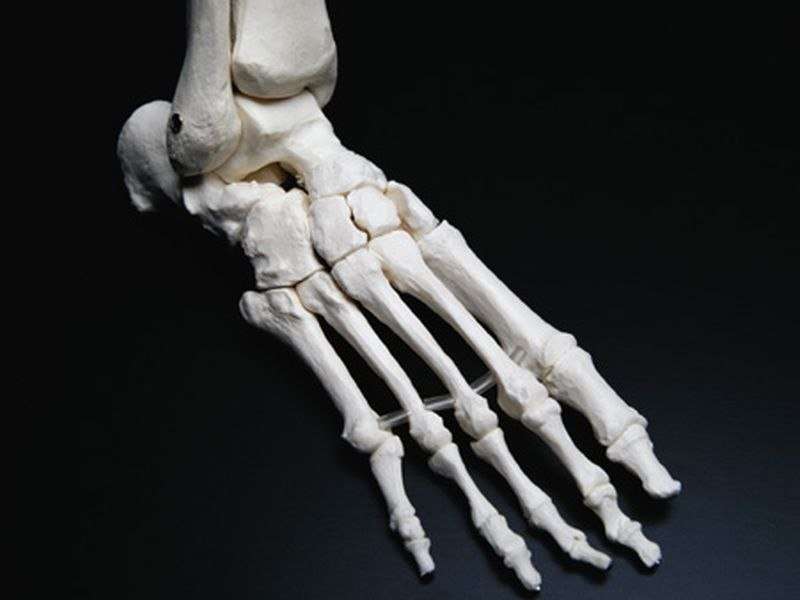(HealthDay)—Compared with intramedullary screw fixation, plantar-lateral plating allows for greater cycles to failure and peak load before failure when applied to cadaver foot specimens with simulated Jones fracture, according to a study published online Feb. 21 in the American Journal of Sports Medicine.
Neil L. Duplantier, M.D., from Houston Methodist Hospital, and colleagues separated 12 pairs of male cadaver feet into two groups (plate or screw) to conduct contralateral comparative testing of two devices. For each fifth metatarsal, a Jones fracture was simulated using an osteotomy with a microsagittal saw. The metatarsals were excised for biomechanical testing after fixation with a plate, placed plantar-laterally with three locking screws and one nonlocking screw, or with a partially threaded solid titanium intramedullary screw. Sinusoidal loading forces were applied until each specimen experienced mechanical failure of implant or bone.
The researchers found that in both groups, failure mode occurred predominantly at the bone-implant interface. Plate fixation was correlated with significantly higher mean values for cycles to failure and peak failure load and with a significantly lower mean gap width.
"As compared with intramedullary screw fixation, plantar-lateral plating allowed for greater cycles to failure and peak load before failure, as well as less gap width, when applied to cadaver foot specimens with simulated Jones fractures exposed to cantilever bending in a load frame," the authors write.
Several authors disclosed financial ties to the medical device and biotechnology industries.
More information: Abstract/Full Text (subscription or payment may be required)
Journal information: American Journal of Sports Medicine
Copyright © 2018 HealthDay. All rights reserved.
























